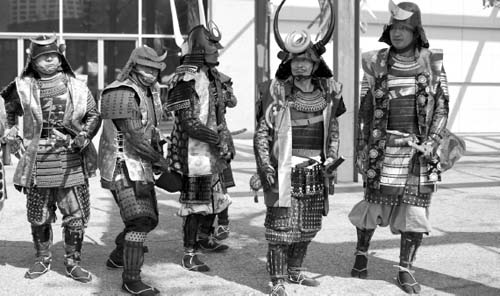ShintoHistory and Sources |
Has Shinto ever been identified with any political regimes? |
What came to be known in 1945 as State (kokka) Shinto began as a formal development after the Meiji Restoration in 1868. The term “State Shinto” was coined in the “Shinto Directive” of 1945 to distinguish formal Japanese government involvement in religious affairs from the religious concerns of Japanese generally, which were called Sect (shuha) Shinto. After 1868, the Japanese government imposed a system of devotion to the emperor as a kind of state creed. Most Christians and Buddhists, as well as adherents of other traditions, considered themselves part of that system. “Shrine Shinto” was another term used to refer to the system, since the government had instituted in 1868 an elaborate structure of ranks for administering the nation’s shrines. Government directives regulated everything in shrine life, including specific rituals to be performed and how records were to be kept. Underlying all this was the principle of “Worship-government unity” (saisei itchi). Directives also set up an elaborate hierarchy of the Shinto priesthood.
One of the principal results of this extensive government control was the doctrine of absolute loyalty to the emperor and the expression of that loyalty in religious practice. A major symbol of the new way was the founding in 1869 of Tokyo’s Yasukuni Shrine as a memorial to all war dead. As a way of controlling powerful symbolic expressions long connected with Shinto, the government decreed in 1884 that the torii gate could be used only for state shrines. In 1900, the government further ordered that Shrine Shinto was no longer to be considered a religion as such, but a universally binding attitude of reverence for the emperor, complete with appropriate rituals.
Another aspect of Shinto’s relationship to the Japanese government is that long before the Meiji era, imperial palaces in the various capitals had maintained a system of three shrines within the compounds for exclusive use by the royal family. In the center, the kashiko-dokoro enshrined the symbols of the emperor’s divinity. The koreiden, on the left, was dedicated to spirits of past emperors and their wives, and to the right the shinden enshrined all the kami of Heaven and Earth. These shrines remain integral to imperial ritual today. State Shinto consisted of the approximately one hundred thousand shrines held under central control between 1868 and 1945, and the Shinto rites unique to the Imperial Household. Japan’s post-World War II Constitution guarantees freedom of religion and mandates strict separation of state and religious affairs.

A group of Samurai aficionados from Nagoya visit Los Angeles during Nisei Week in 2009. (Jose Gil / Shutterstock.com).
